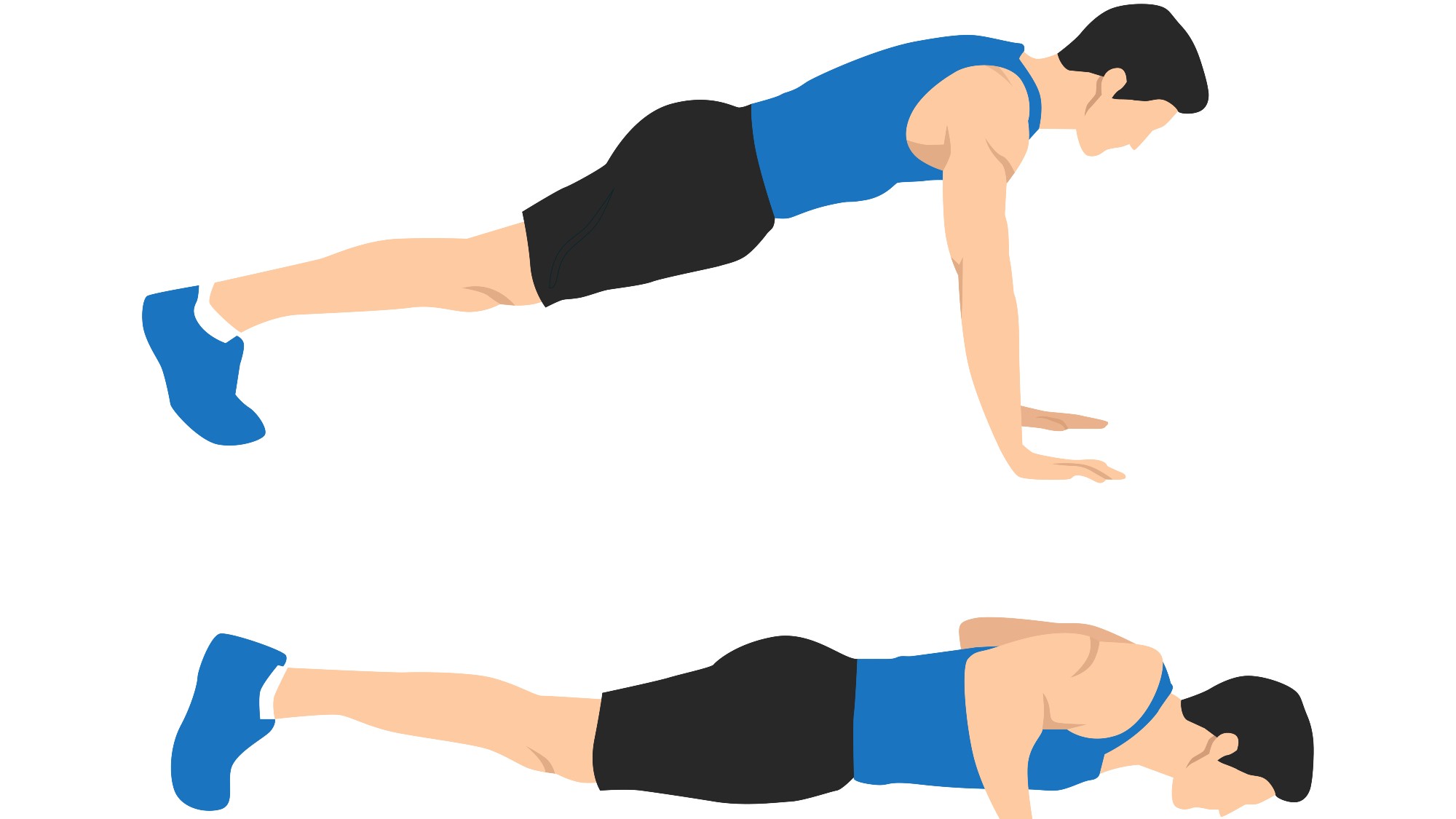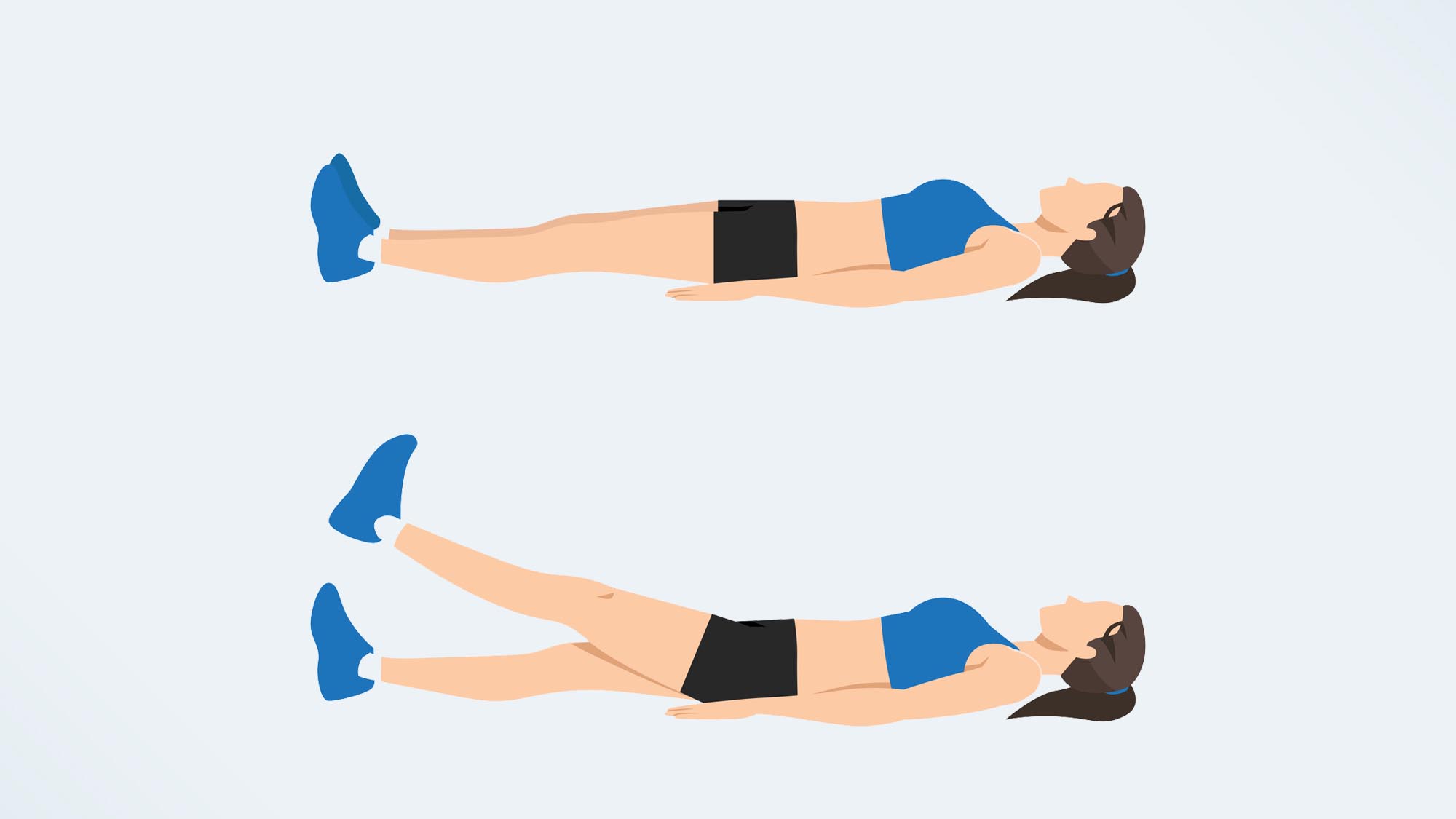
Target the muscles across your chest, shoulders, back, legs, and core muscles using these five-minute full-body workout finishers. Five minutes is all it takes to work your muscles hard in the gym or during home workouts.
Personal trainers use various techniques to whip up some extra pain for clients, but these methods genuinely have a purpose (we swear). From drop sets to supersets or giant sets, you can program exercises and workouts to challenge muscles more intelligently, maximize efficiency, and work major muscle groups harder.
Finishers are a brilliant way to squeeze the last drops of effort from any workout, helping muscles to reach fatigue, ramp up your heart rate, and send calorie burn to soar — depending on your chosen exercise. (I personally swear by this 10-minute finisher that only uses one kettlebell.)
Variables like workout load, time under tension (how long a muscle group works under contraction), and rep ranges are fun to manipulate. Besides, 5 minutes is nothing — right?
Whether your goal is to pack on lean muscle mass, build strength, or something else entirely, these workout finishers are guaranteed to push your mind and body. Remember, these mini-workouts are finishers, so pick one or piggyback two (maximum) depending on your equipment, workout plan, or fitness experience.
1. Upper-body bodyweight drop set
Push-ups target the pectoral muscles, triceps, anterior deltoids (fronts of your shoulders), and core muscles. Drop sets do two things: increase your overall training volume (total reps) and time under tension during the workout.
Once you’ve finished an upper-body workout (why not try this upper-body dumbbell workout to start with), perform the exercises below. Complete the first exercise until failure (as many reps as you can with good form) before moving to the next, repeating until fatigue, and so on. Each exercise decreases in load.
Sign up to get the BEST of Tom's Guide direct to your inbox.
Get instant access to breaking news, the hottest reviews, great deals and helpful tips.
A) Weighted push-up

Place a barbell plate onto your mid to upper back across your shoulder blades. (You could also use a weighted vest.) Start in a push-up position with shoulders, elbows, and wrists stacked. Bend your elbows and lower your chest to the floor, keeping your elbows tucked close to your ribs. Pause, then push upwards with power while keeping your core engaged. Place your knees down for extra support, and keep your hips lifted. You can learn how to do a push-up with proper form here.
We recommend having a spotter for this exercise to keep the weight secure.
B) Regular push-up

Remove the plate and perform regular chest-to-floor push-ups until failure. Keep your core engaged and lower your chest just above the floor for each rep. Place your knees down for extra support.
C) Arms elevated push-up

Place your hands on a bench, box, or wall. Your upper body should stay elevated higher than your lower body. Perform reps until failure, keeping a straight line from your head to your toes.
2. The lower-body ladder
Pick up a pair of the best adjustable dumbbells or another weight and perform 10 reps of both exercises back to back. Take a brief rest, then continue down the ladder, decreasing by one rep each round. If you have time, head back up the ladder from one rep.
The exercises primarily work the hip flexor muscles, glutes, quads, hamstrings, core muscles, and calves.
A) Front rack dumbbell squats

Stand with feet shoulder-width apart and core engaged. Rack your dumbbells onto your shoulders, keeping your elbows lifted. Lower into a squat position and send your hips backward while keeping your chest proud. Thighs should be parallel to the floor, and weight distributed evenly throughout your feet. Drive through your heels to stand.
B) Front rack dumbbell reverse lunges

Keep the weights racked onto your shoulders. Look forward. Engage your core. Take a big step backward with your left leg and lower into a reverse lunge, tapping your back knee gently to the floor. Drive through your front heel and step your left leg back to starting position. Alternate sides. Split reps between sides.
3. The 66 COREMOM
This core finisher is a play on the EMOM — every minute on the minute. Perform six reps of each exercise within a one-minute window and rest for the remainder of the minute. Start a new round every minute. Aim for 10 seconds of rest before the next minute starts, and decrease or increase reps to ensure you work for 50 seconds.
Your rectus abdominis (six-pack muscles) and deeper stabilizing core muscles work hardest during these exercises.
A) Slow leg raises x6

Start on your back with legs extended in front of you and hands on the floor close to your hips for support. Tilt your pelvis toward your belly button to flatten your lower back and brace your core. Keep your legs together and straight, then lift them into the air towards the ceiling with your toes pointed. Slowly lower until your heels reach one inch off the floor, and repeat. Bend your knees if needed or raise on leg at a time.
B) Burpees x6

Stand with your feet hip-width apart. Place your hands onto the floor in front of your feet, then step or jump both feet back into a high plank position. Perform a push-up, then jump both feet forward behind your hands and jump into the air with arms above your head.
4. The ARMRAP
Do n AMRAP — as many rounds as possible — for your arms. This one targets your biceps and triceps. It’s a torcher best used after an upper body workout or this 10-minute shoulder workout. Perform exercises back to back for 10 reps each with minimal rest for five minutes. Good luck carrying anything after giving this a go!
A) Bicep curls x10

Stand with feet hip-width apart holding a dumbbell in each hand. Adopt an underhand grip, keeping elbows close to your body. Engage your core. With control, curl the weights towards the fronts of your shoulders by bending at the elbows. Slowly lower the weights with control. Here’s how to perform bicep curls.
You can use dumbbells, a resistance band, or a barbell to perform the bicep curl.
B) Overhead tricep extensions x10

Stand with your feet hip-width apart and your core engaged. Lift a dumbbell overhead gripping the weight on either side with both hands. Bend your elbows and slowly lower the weight behind your head towards your upper back, keeping your elbows locked close to the body without flaring. Drive the weight back up by extending your elbows. Here’s how to perform tricep extensions properly.
5. The functional finisher: Kettlebell killer
The functional finisher uses two full-body exercises that engage your major muscle groups, including your back, glutes, core, chest, arms, and leg muscles. Perform as many kettlebell swings as possible in 2 minutes and 30 seconds. Switch to your snatches and perform max reps until the 5-minute timer runs out. Ouch.
A) Kettlebell swings

Stand with your feet shoulder-width apart and bend your knees, then grab the kettlebell with both hands. Engage your core, then swing the kettlebell back between your legs. Swing the kettlebell up to shoulder height, squeezing your glutes and abs, arms outstretched. Snap your hips at the top of the movement, then allow the kettlebell to swing back again.
Here’s how to do a kettlebell swing. Use a dumbbell if you don’t have a kettlebell.
B) Kettlebell snatch

Start with the kettlebell on the floor between your feet and keep your feet hip-width apart. Push your hips backward, keep a flat back, and lower your left arm. Grip the kettlebell, and swing the kettlebell between your legs. Straighten the knees, shrug the left shoulder, and swing the kettlebell upwards, driving your arm up overhead. Keep the core engaged, and swing the kettlebell over your hand so that the kettlebell rests on the back of your hand as you transition overhead. Lock the left arm out, then flip the kettlebell back as you lower the arm back down.
Learn the kettlebell snatch technique.
No weights? No problem. Try this power-building 300-rep bodyweight workout, and our fitness editor did 100 plank jacks a day for a week!

Sam Hopes is a level 3 qualified trainer, level 2 reiki practitioner and senior fitness writer at Tom's Guide. She is also currently undertaking her Yoga For Athletes training course. Sam has written for various fitness brands and websites over the years and has experience across brands at Future such as Live Science, Fit&Well, Coach, and T3.
Having worked with fitness studios like F45 and Virgin Active, Sam now primarily teaches outdoor bootcamps, bodyweight, calisthenics and kettlebells. She also coaches mobility and stretching-focused classes several times a week and believes that true strength comes from a holistic approach to training your body.
Sam has completed two mixed doubles Hyrox competitions in London and the Netherlands and finished her first doubles attempt in 1:11.
